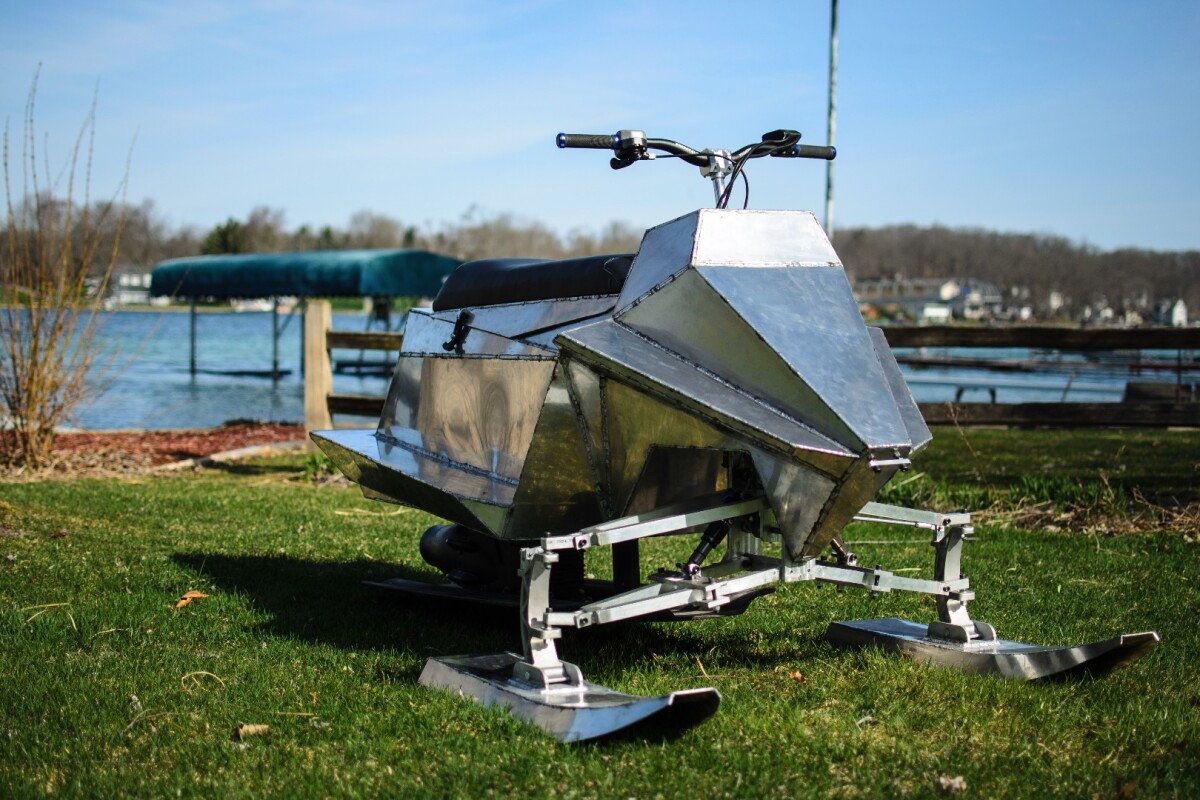A team from Calvin College, Michigan, is trying to put the "ski" back in "jet ski" with a unique kind of personal watercraft (PWC) that features three skis, a tilting front suspension system and a 650cc engine. Inspired by the dual-ski Wetbike of the 1970s and 80s, and perhaps a little by the bizarre Watercross racing movement, the Jet Blade team has completed prototyping and preliminary water testing.
Eight years and one day ago, we wrote about a bunch of maniacs who take their snowmobiles, waterproof them a bit, then go out and race them on the water. Watercross, they called it, and it generally involved the two skis flopping around uselessly as the powerful snowmobile engine tended to hoist them straight out of the water.

Now, a senior design team from Calvin College is working on a prototype PWC that brings skis back into the game. The Jet Blade is a slightly odd-looking machine that rides on three skis – two steered skis at the front that use an active tilting suspension system, and one at the rear, upon which sits a 650cc, 50 hp (37 kW) engine.
As the rider climbs onto the floating Jet Blade, the skis are underwater and there’s very little control available. As you get moving, the skis plane upwards and break through the surface until the vehicle is completely riding on top of the water.

The front skis then offer a fairly agile steering input, while the suspension provides a smooth ride over bumpy water. Mind you, it’s not a wave-jumper. The team’s design report states the Jet Blade is "designed for use on small inland lakes where waves should not exceed 1-2 ft (30 - 60 cm) in amplitude."
Tilting the front skis lets both stay on the surface of the water to dig in and steer the thing, and makes it not unlike a Piaggio MP3 for the water.

The Jet Blade’s engine has been sourced from the Wetbike, a twin-ski water-motorcycle last produced in 1992. The Wetbike’s single front ski allowed for some pretty impressive handling, but its single-track design made it quite a handful to ride. Presumably a more stable three-ski design will make lower speed handling easier and reduce the learning curve.
The Jet Blade team is currently searching for potential investors, and examining the option of going into manufacturing with a production version at a retail price of US$12,000.
Check out the prototype in action in the video below.
Source: Jet Blade team website





































